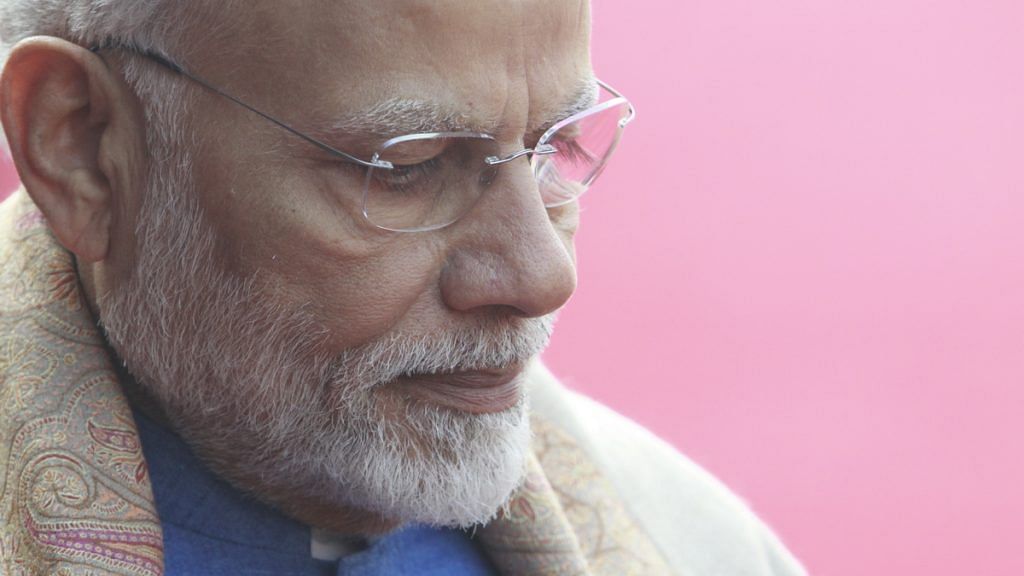Hours before India refused to join the China-led 16-nation Regional Comprehensive Economic Partnership or RCEP Monday, the US unveiled an updated status report on ‘A Free and Open Indo-Pacific’ or FOIP in which it applauded its strategic partnership with India, “a fellow democracy with 1.3 billion people”.
In contrast, US Secretary of State Mike Pompeo who signed off on the report, accused China of “practicing repression at home and abroad”, and described it as being intolerant of dissent and aggressively controlling media and civil society.
Significantly, as they sought to grow their respective trade groupings, both China and the US had the same countries in their line of sight – the 10 ASEAN nations, Australia, New Zealand, Korea, Japan and India.
Except for India, though, the remaining 14 out of the 15 countries across the Indo-Pacific decided they would join the RCEP as well as ally with the FOIP.
Prime Minister Narendra Modi cited Mahatma Gandhi’s talisman, besides his own misgivings, as his reason for saying ‘No’ to the RCEP. But there seems to be something else happening here that doesn’t quite square up.
Also read: Modi’s RCEP move shows sound political judgement. Don’t scoff, it’s rare these days
More than Gandhi’s talisman
Two weeks ago, Finance minister Nirmala Sitharaman said a US-India trade deal was going swimmingly well. While in Mumbai over the weekend, US Treasury Secretary Steve Mnuchin told key industrialists including Anand Mahindra, Adi Godrej and Harsh Goenka that the US wanted India to become, not a $5-trillion economy as Modi has often talked about, but a $10 trillion one.
None other than the Chinese Communist Party-owned Global Times seems to have understood what was being said.
In an editorial Tuesday, it said: “Washington wants to mobilise New Delhi and turn it into a ‘frontline’ in the confrontation against China.”
Global Times went on to pay Modi a compliment. “But India seems to be craftier than the US. It is enjoying diplomatic benefits provided by the US, while attaching importance on developing relations with China. Washington is driving a wedge between China and India, but Modi won’t fall into the trap,” it said.
Certainly, opinion is divided on India’s decision not to join the RCEP. Depending on where you stand, the Modi government has either capitulated to its own fears of the big, bad and grey nightmare called China, or has stood tall and upright, promising to protect its people in the face of Beijing’s relentless determination to flood the country with cheap exports.
With the economy in such bad shape and growth stagnating at 5 per cent, perhaps the decision for Modi was easier than ever. Key stakeholders like the dairy and steel industries were dead against the RCEP. RSS affiliate-Swadeshi Jagaran Manch had warned some time ago that foreign imports could not be allowed to devastate local industry – even though, for one short moment in late September when the PM went to the US, SJM’s Ashwani Mahajan met representatives from Walmart and Amazon, raising hopes of a compromise.
Also read: India’s rejection of RCEP trade deal is a sign of weakness
Perform or perish
It’s odd, though, that the ghost of the East India Company is rearing its head again. India had buried that particular nervous twitch with the P.V. Narasimha Rao-Manmohan Singh 1991 reforms, as it dipped into its reserves and opened itself up to the world. To be wealthy is glorious, India said, as it took a leaf out of Deng Xiaoping’s book, and never looked back.
In 1991, India pledged nearly 47 tonnes of gold with the Bank of England and the Bank of Japan to raise $400 million. Today, India’s foreign exchange reserves stand at $434 billion.
Oddly enough, the fear of the foreigner is back. This is even more confusing because PM Modi has travelled far and wide these past five years, meeting both commoner and king, and he realises that competition is the only way to either perform or perish.
In the beginning, that was the reasoning behind ‘Make in India’; import duties were raised when the first Modi government came in, so as to protect manufacturing at home. But demonetisation and a badly implemented GST, which exacerbated the economic, and more recently, the political situation – apparent in the Maharashtra and Haryana elections – seem to have contributed to Modi’s loss of nerve.
Perhaps the Americans, furious at the Chinese challenge their domination as a superpower, are indicating that they are willing to bail Modi out. Fact is, the PM has been more than willing to join security-related groupings, like the ‘Quad’ nations of the Indo-Pacific (consisting of India, US, Japan and Australia); foreign minister S. Jaishankar participated in a Quad ministerial meeting in New York in September with some alacrity.
Certainly, India’s refusal to join the RCEP is a decisive moment. But whether or not Modi turns right towards Donald Trump and the US, he knows he has to embrace a new generation of reforms.
Surviving either Trump or China’s Xi Jinping certainly won’t be easy. If India has to compete with the world again, Modi knows he will have to push some bitter medicine down the country’s throat, shed a few duties and tariff barriers, and make India leaner and meaner. In some ways, 2019 is like 1991.
Perhaps, the PM should read Robert Frost tonight:
“Before I built a wall, I’d ask to know
What I was walling in or walling out
And to whom I was like to give offense.”
